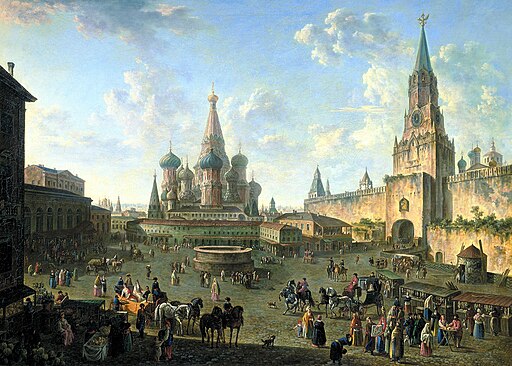The Heraklion Archaeological Museum is a museum located in Heraklion on Crete. It is one of the best museums for Minoan art and artifacts of the Minoan civilization of Crete.
The museum houses artifacts from the periods of Cretan prehistory covering over 5,500 years from the Neolithic period to Roman times.
The museum began in 1883 and has survived multiple destructive earthquakes in the early 1900s, natural disasters, and the bombing and subsequent German invasion in 1941.
Although the museum was damaged during World War II, the collection survived and again became accessible to the public.
Virtual Tour of the Heraklion Archaeological Museum
- Snake Goddess
- Phaistos Disc
- Bull-Leaping Fresco
- Ladies in Blue – Minoan Fresco
Highlights Tour of the Heraklion Archaeological Museum
Snake Goddess
This 3,500-year-old figurine depicts a woman with bare breasts holding a snake in each of her raised hands. It was found at a Minoan archaeological site in Crete.
At the Palace of Knossos by archaeologist Arthur Evans and dated to the Minoan civilization, c. 1700–1450 BCE.
It was Evans who called the figurine a “Snake Goddess,” since then, it has been debated whether the statuette depicts a priestess or a deity.
A number of these types of figurines have been found in house sanctuaries. They appear to be “the goddess of the household.”
Phaistos Disc
The Phaistos Disc is a disk of fired clay from the Minoan palace of Phaistos on the island of Crete, possibly dating to the Minoan Bronze Age in the second millennium B.C.
The disk is covered on both sides with a spiral of stamped symbols featuring 241 tokens, comprising 45 distinct signs.
The symbols were made by pressing hieroglyphic “seals” into a disc of soft clay, in a clockwise sequence spiraling toward the center of the disk.
Its purpose and meaning, and even its original geographical place of manufacture remain disputed, making it one of the most famous mysteries of archaeology.
The Phaistos Disc has captured the imagination of archaeologists, and many attempts have been made to decipher the code behind the disc’s signs.
Bull-Leaping Fresco
The Bull-Leaping Fresco is a restored stucco painting situated initially on the upper-story portion of the east wall of the palace at Knossos in Crete. The fresco is one of a few surviving depictions of the act of jumping over bulls.
The Bull-Leaping Fresco depicts three individuals, two women one at the front, one at the back, and a male youth shown balancing on the bull. The techniques employed and the reasons for the ceremony remain obscure.
The gender of the individuals is identified according to the Minoan art convention of painting women with pale skin and men with dark skin. Their clothes and jewelry identify the participant’s high status.
The bull is shown in what is called the “Mycenaean Flying Leap,” which means it is in full gallop. The artist has shown the bull’s body in an elongated form with extended legs to indicate movement.
Ladies in Blue – Minoan Fresco
Minoan Fresco of the Ladies in Blue depicts the women in the open blouse that was typical in the later Minoan Culture. Their skirts would have begun at the waist, were flounced, and of many colorful patterns.
These fresco fragments were discovered during the excavation of a Minoan site in Crete by the British archaeologist Sir Arthur John Evans.
They were uncovered in the west wing of the Palace of Knossos. The fresco was later significantly restored by Swiss artist Emile Gilliéron and his son, Emile, as the chief fresco restorers at Knossos.
The three white-skinned ladies with narrow waists and coiled hairstyles in this fresco are wearing form-fitting dresses that were low-cut and exposed their breasts.
Heraklion Archaeological Museum Collections
The museum’s collection is organized into the following exhibition spaces:
- 6000 BCE to the pre-Palatial period
- 2000 BCE to 1700 BCE Minoan peak sanctuaries
- 1700 BCE to 1450 BCE Minoan influence
- Cemeteries at Knossos, Phaistos, and Archanes
- 1700 BCE to 1450 BCE – Palace of Zakros
- 1700 BCE to 1450 BCE in eastern Crete
- 1400 BCE to 1100 BCE Mycenaean
- 1100 BCE to 900 BCE Dorian
- Hall of the Frescoes
- Classical Greek and Greco-Roman
Greek Proverbs and Quotes
- Greek Proverbs and Quotes
Heraklion Archaeological Museum
- Museum: Heraklion Archaeological Museum
- Established: 1883
- Location: Heraklion, Crete, Greece
- Country: Greece
Heraklion Archaeological Museum Map
Heraklion Archaeological Museum – Crete
Crete. The Heraklion Archaeological Museum
Archaeological Museum of Heraklion, Crete, Greece
Knossos, Archaeological Museum, Heraklion
Double Axe – Ancient Greece – Bronze Age
Heraklion Archeological Museum
Ancient or Forgery – Ancient Greece – Bronze Age
~~~
“I felt once more how simple and frugal a thing is happiness:
a glass of wine, a roast chestnut, a wretched little brazier, the sound of the sea.
Nothing else.”
– Nikos Kazantzakis
~~~
Photo Credit: JOM
Popular this Week








 Sponsor your Favorite Page
Sponsor your Favorite Page SEARCH Search for: Search Follow UsJoin – The JOM Membership Program
Sponsor a Masterpiece with YOUR NAME CHOICE for $5
Share this:
- Tweet
